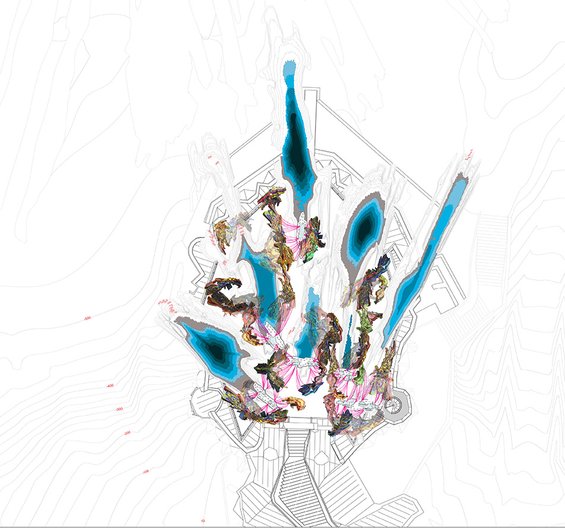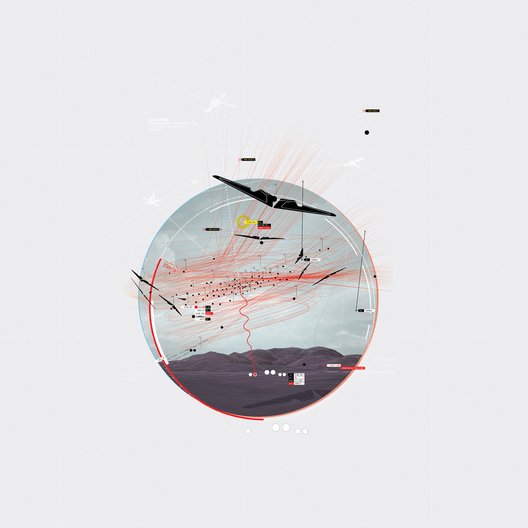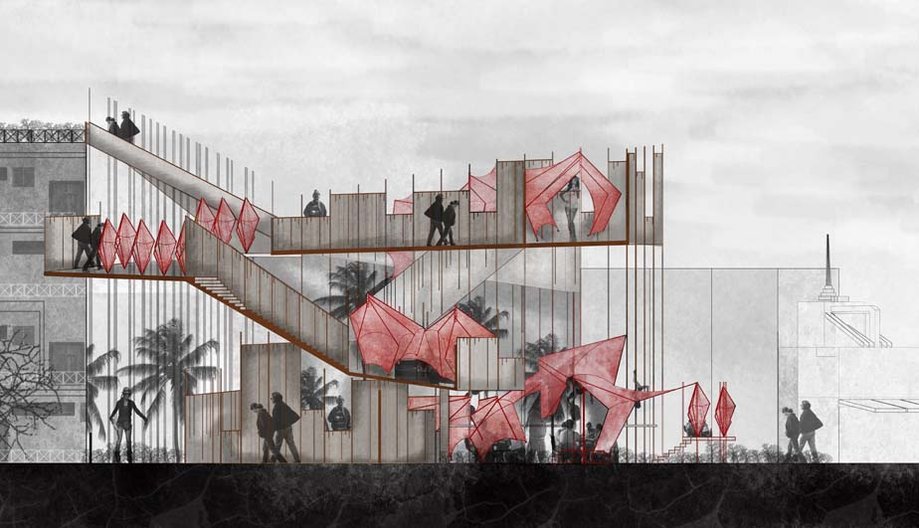10 July 2011
by Alex Maxwell
The first noticeable thing about this year's Projects Review occurs before you even step inside the hallowed black door. There is no pavilion. Like last year, it seems all large scale productions will, and have, taken place at Hooke Park, the Dorset forest owned and operated by the school. That's not to say they are winding down fabrication. The opposite in fact, with a new masters course, Design & Make, which is based in Dorset. The current as yet un-built project is a 500m2 workshop, which will be the first of a new campus.
The second noticeable thing is the front AA Gallery, which has been set up with some slatted wood bleachers along one wall, awaiting FORMAT. This is a new 'live magazine' exploring the various ways discourse takes place, through seminars, screenings, and 'real-life 3D presentations'.
The third, and major, thing, though perhaps least obvious, about the show is its curation. Gone is the sequential programming of unit a following unit b. Instead, the Units are grouped via theme, theory, or research interests. It works well throughout, with some interesting juxtapositions thrown up. Foundation's explorations in prosthetics next to the Design Research Lab's digital and analogue computational systems next to First year's Rube Goldberg machine.
The problem I find is that there is very little break in the onslaught of quality work, there is no dull unit which you can glaze over in preparation for the next. As such I had difficulty picking out specific projects to review, not least because sometimes all there is to a project is one image or model. With this variety and depth of work one could spend an inordinate amount of time pontificating. Instead I will pick out some of the work that tickled my personal interests.
Liam Young and Kate Davis' Unknown Field Division used a trip across Australia's uninhabited interior, reporting and speculating from the vast landscapes containing excavations, techno arrays, and aboriginal mythology. Oliviu Lugojan's film and drawings for a choreographed military airspace was the pick of a strong display.
Inter 8 investigated dynamic tensions in Little Havana, the epicentre of the Cuban community in Miami. Once the political issues had been framed, a spatial expression was suggested making use of a particular fabrication process. Having spent time living in a Cuban community, I always find it interesting what others perceive to be the issues faced.
Brett Steele, the AA Director, says in the introduction notes that 'great schools build audiences for new architectural ideas'. There are plenty on offer in Bedford Square, and one could do worse than be part of this audience.
All the projects can be found on the micro site here.




